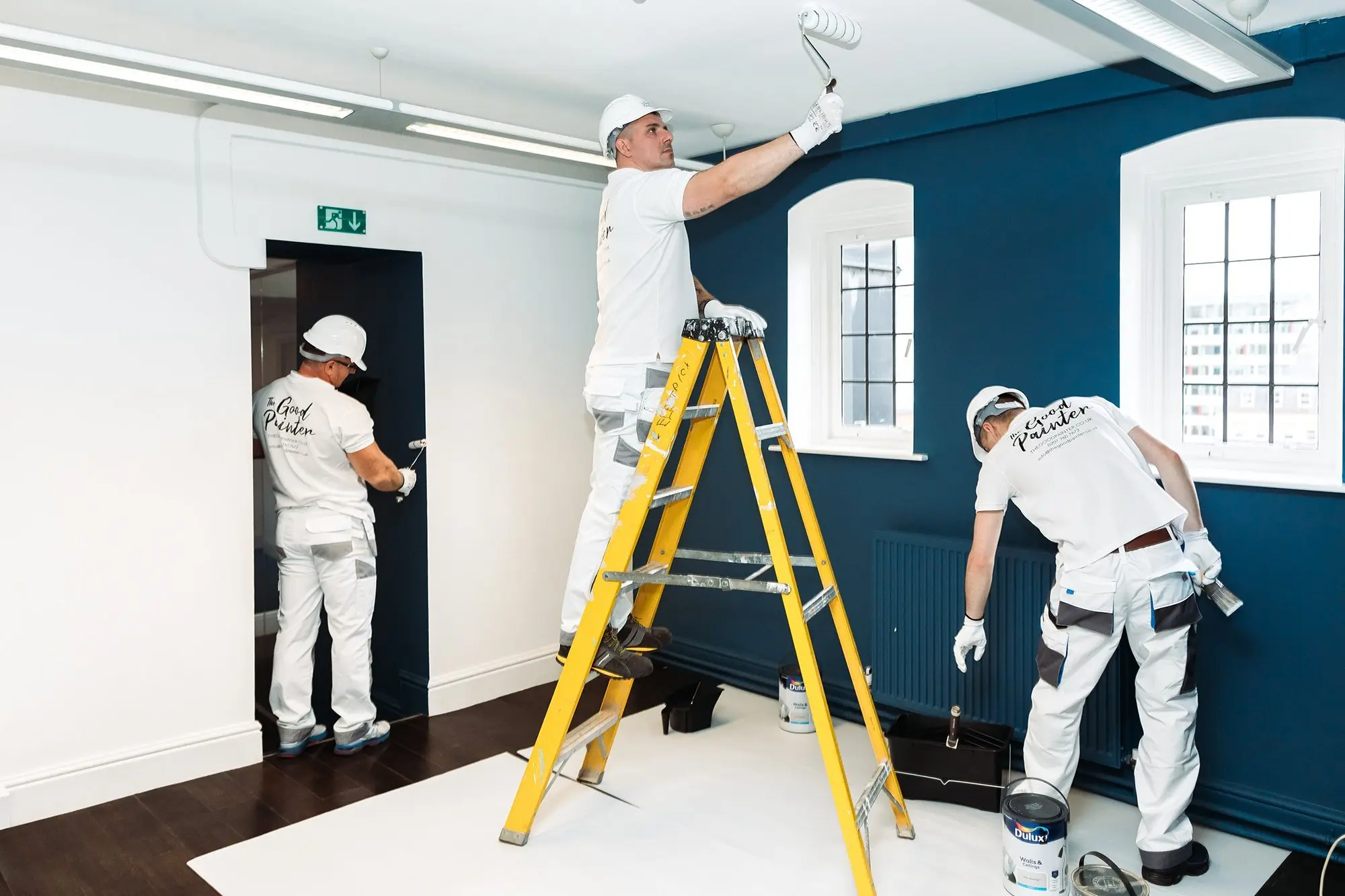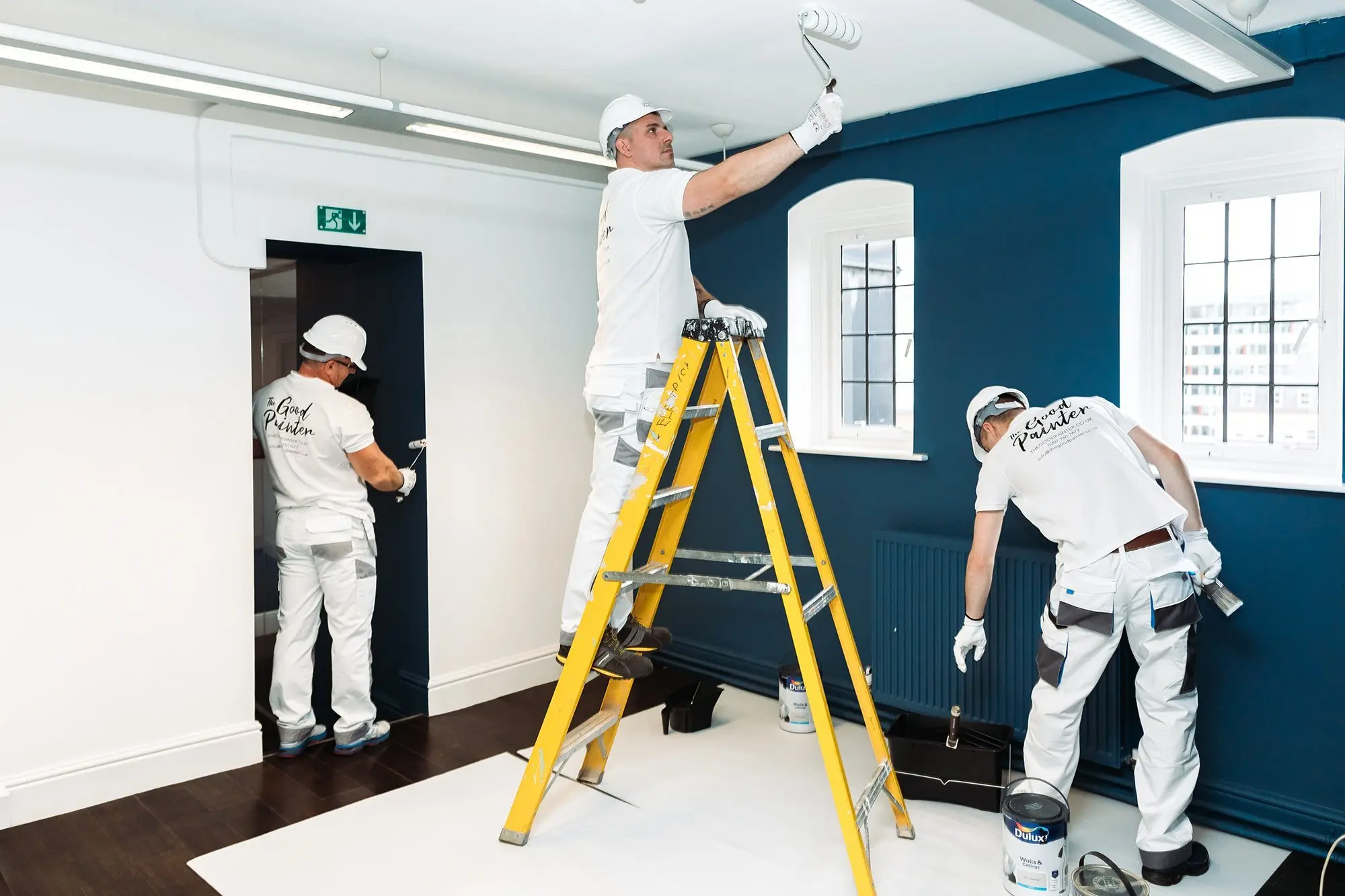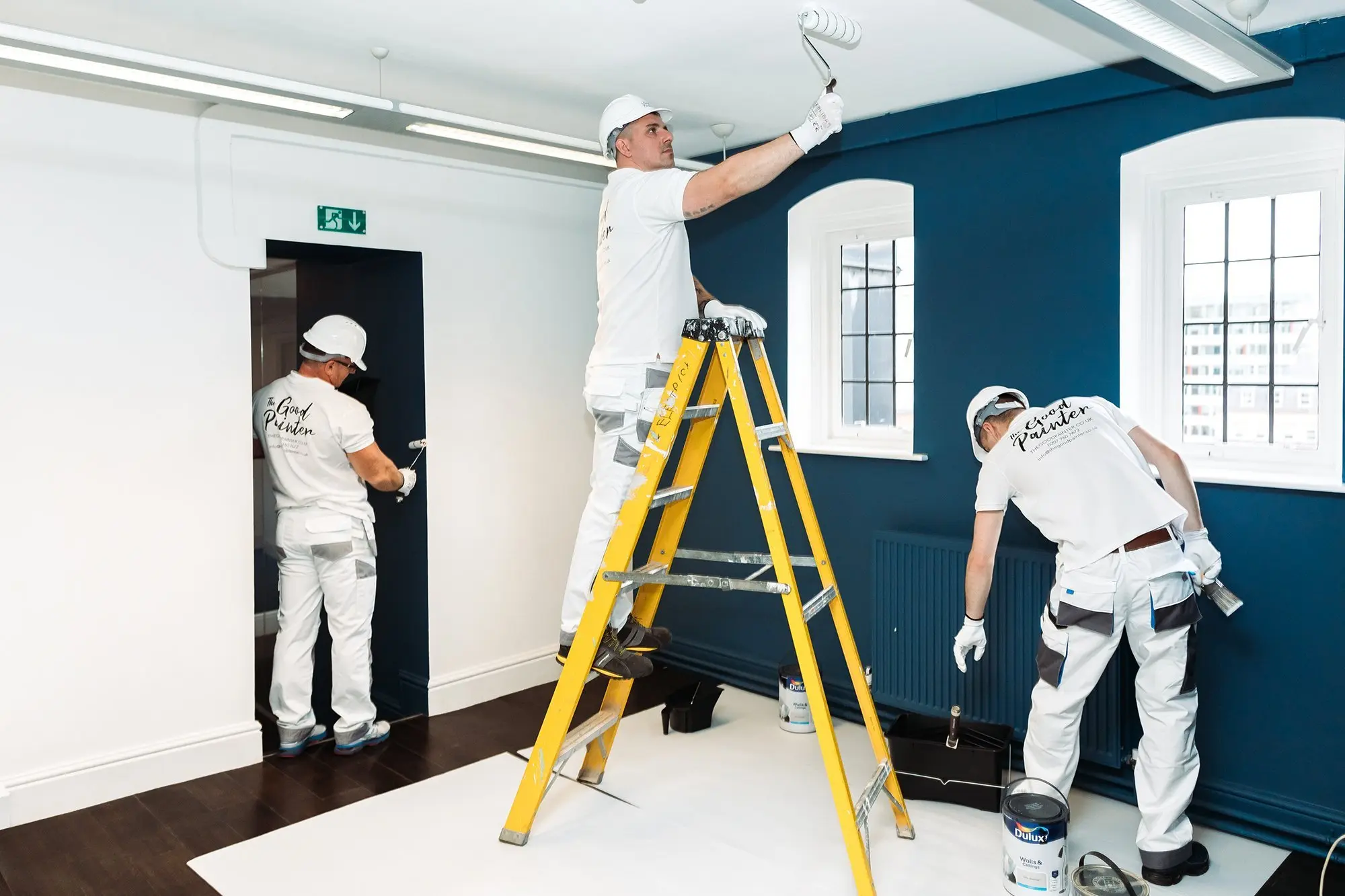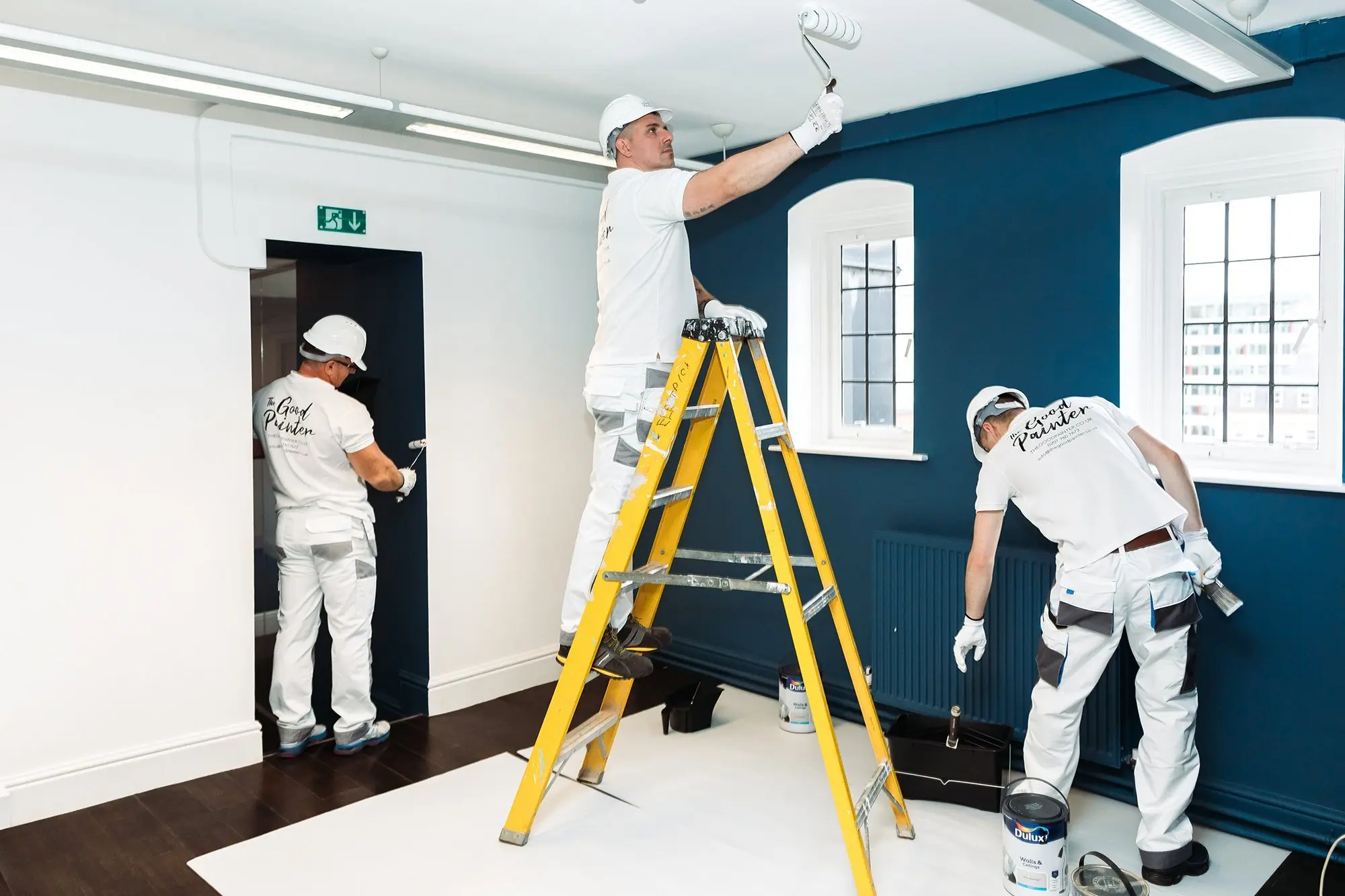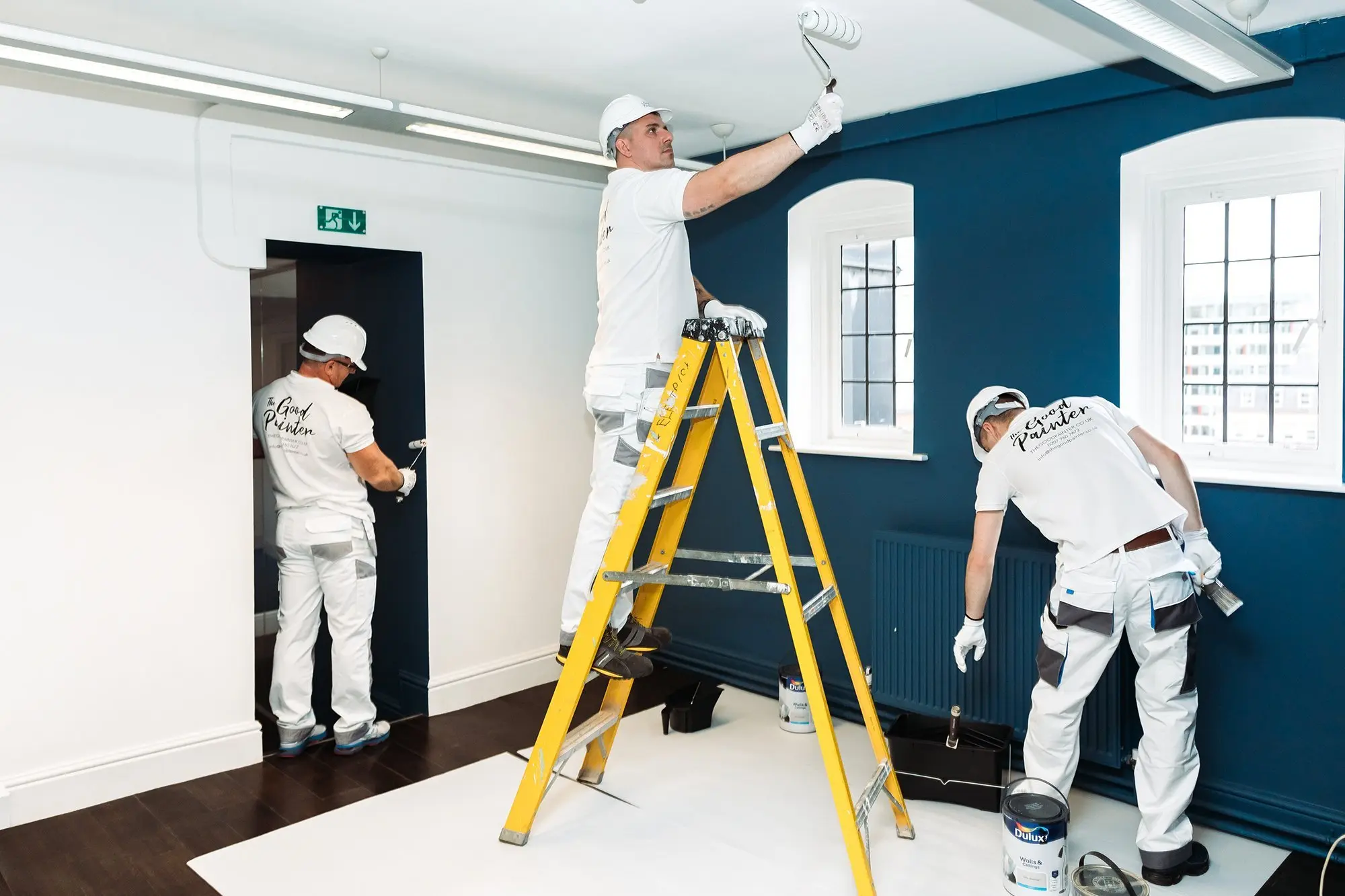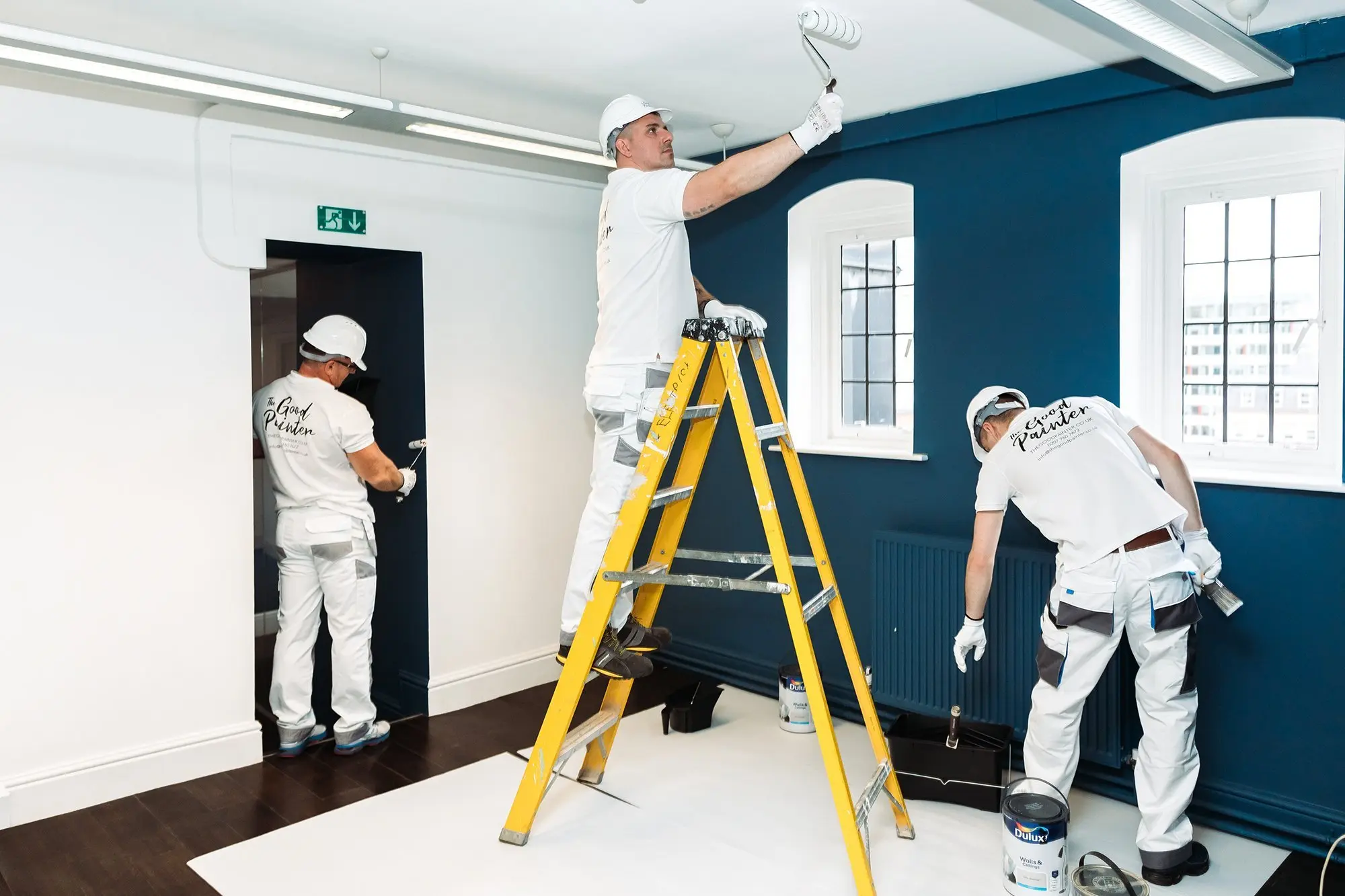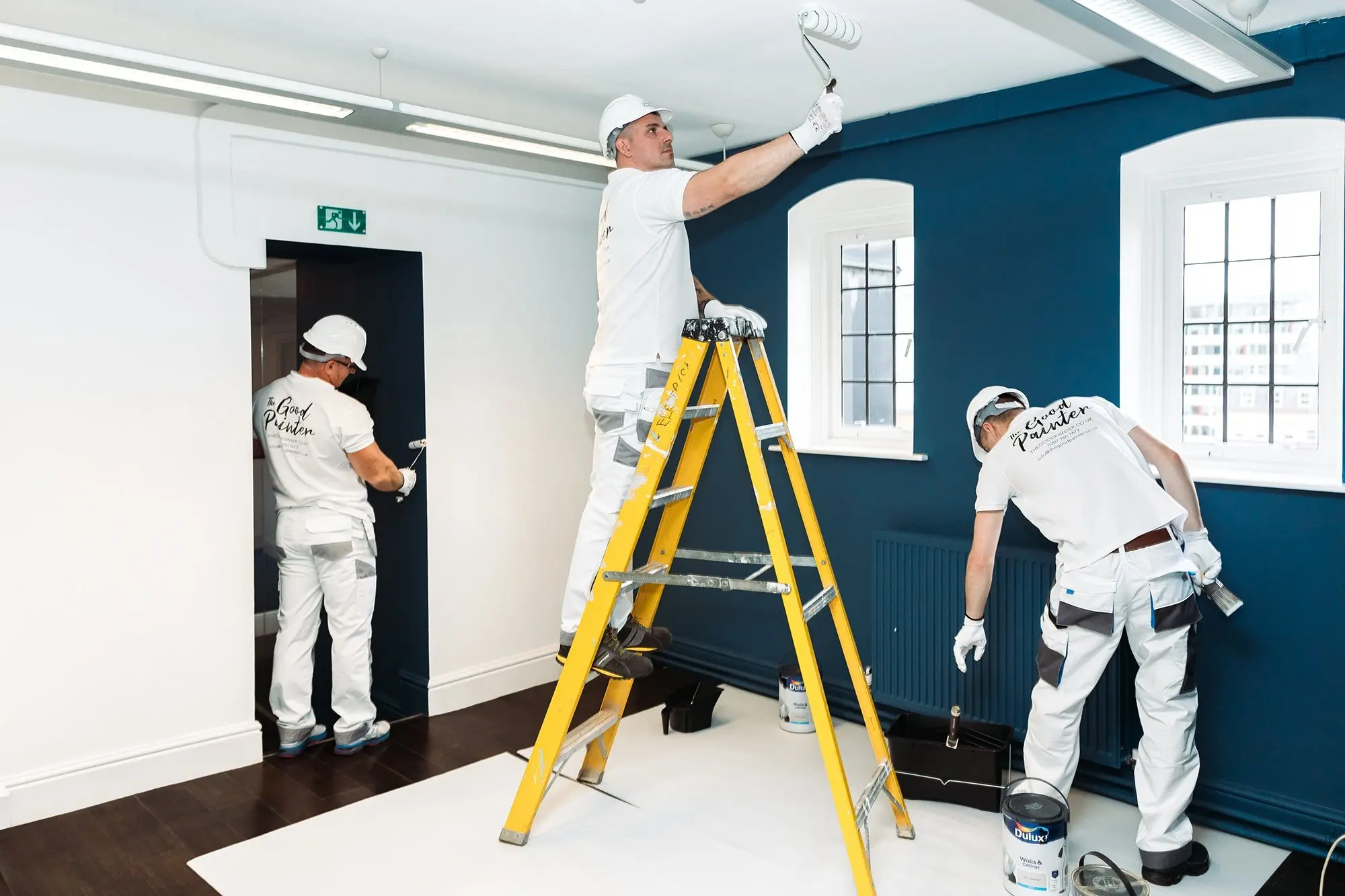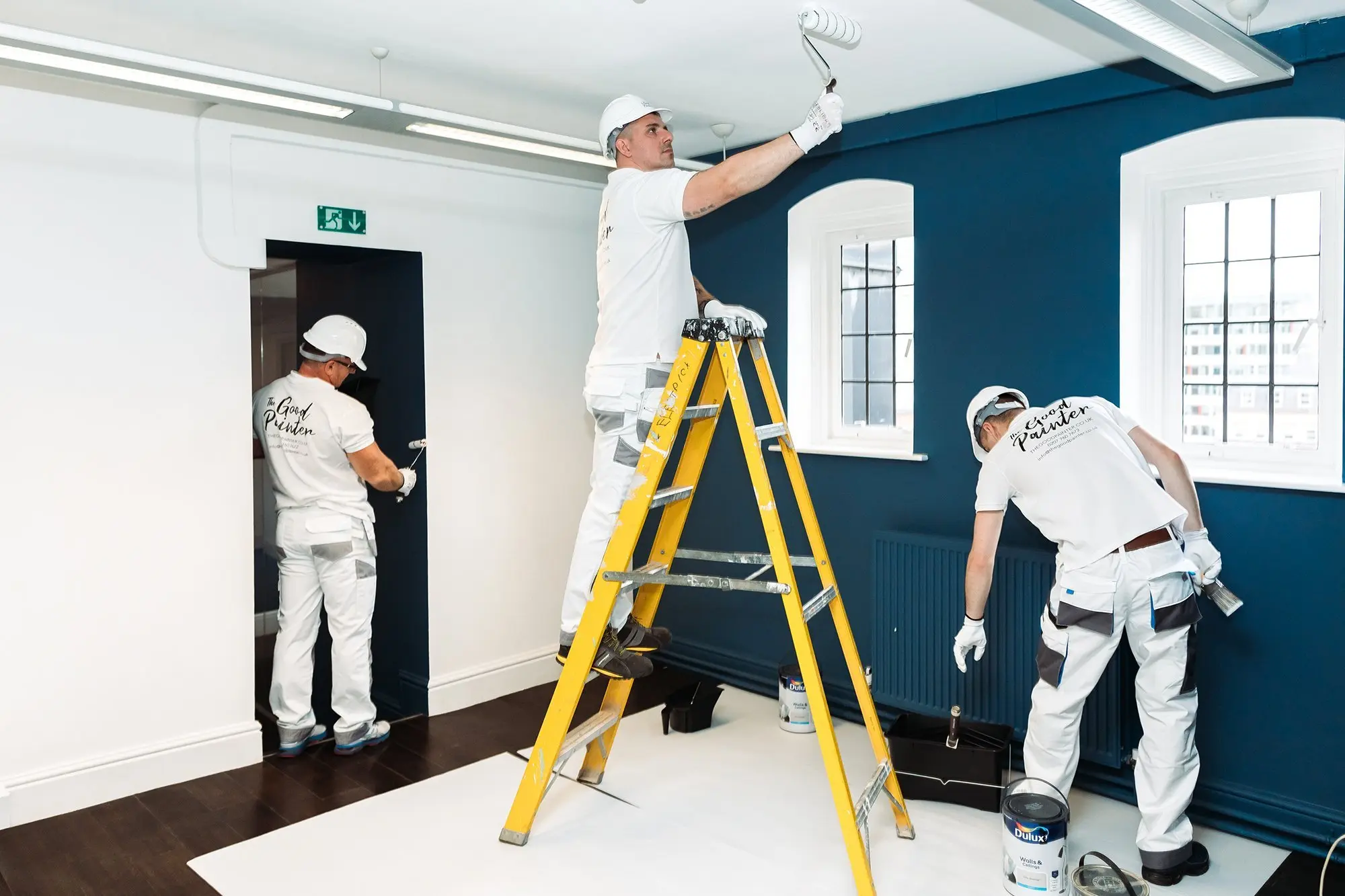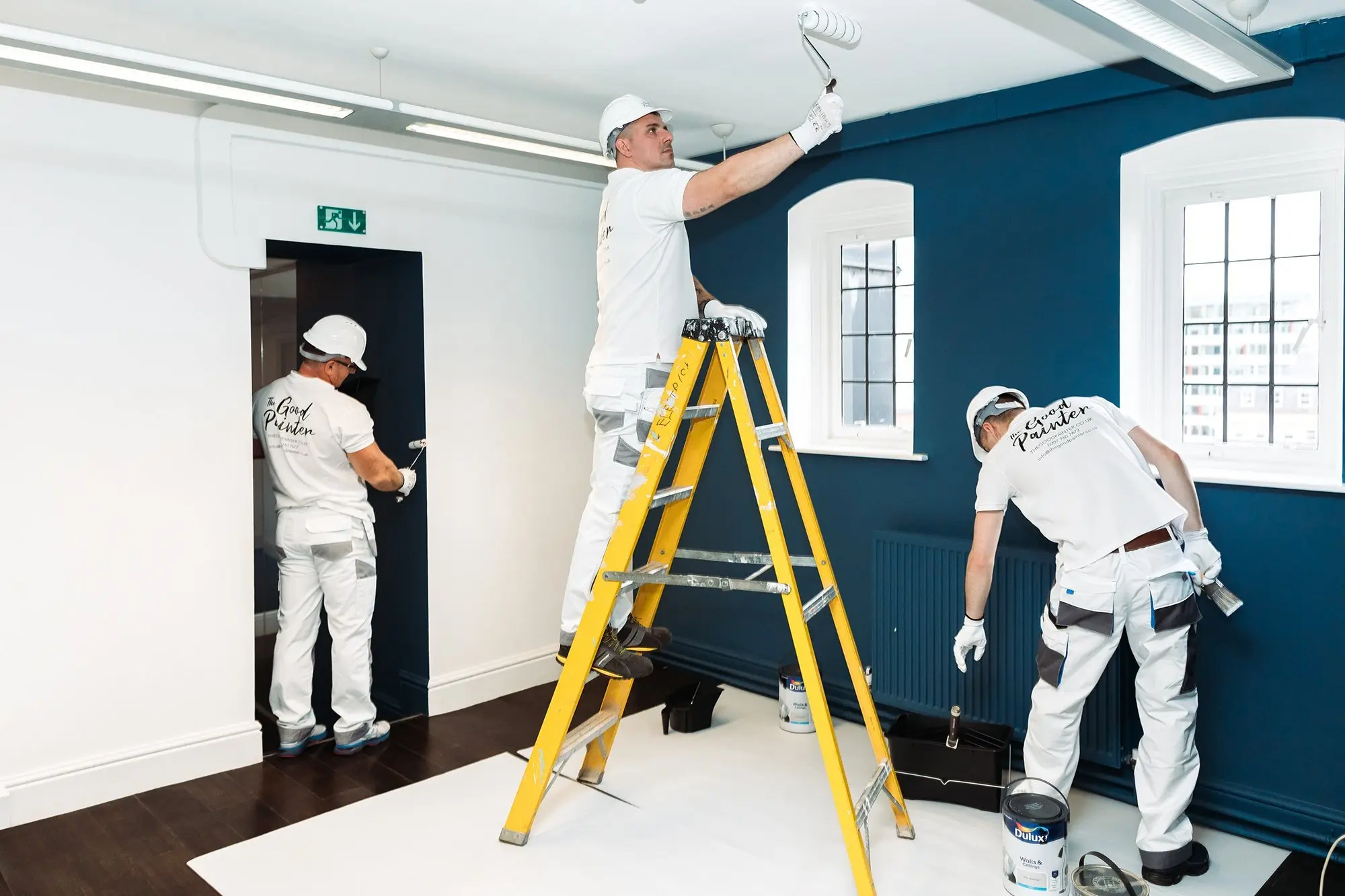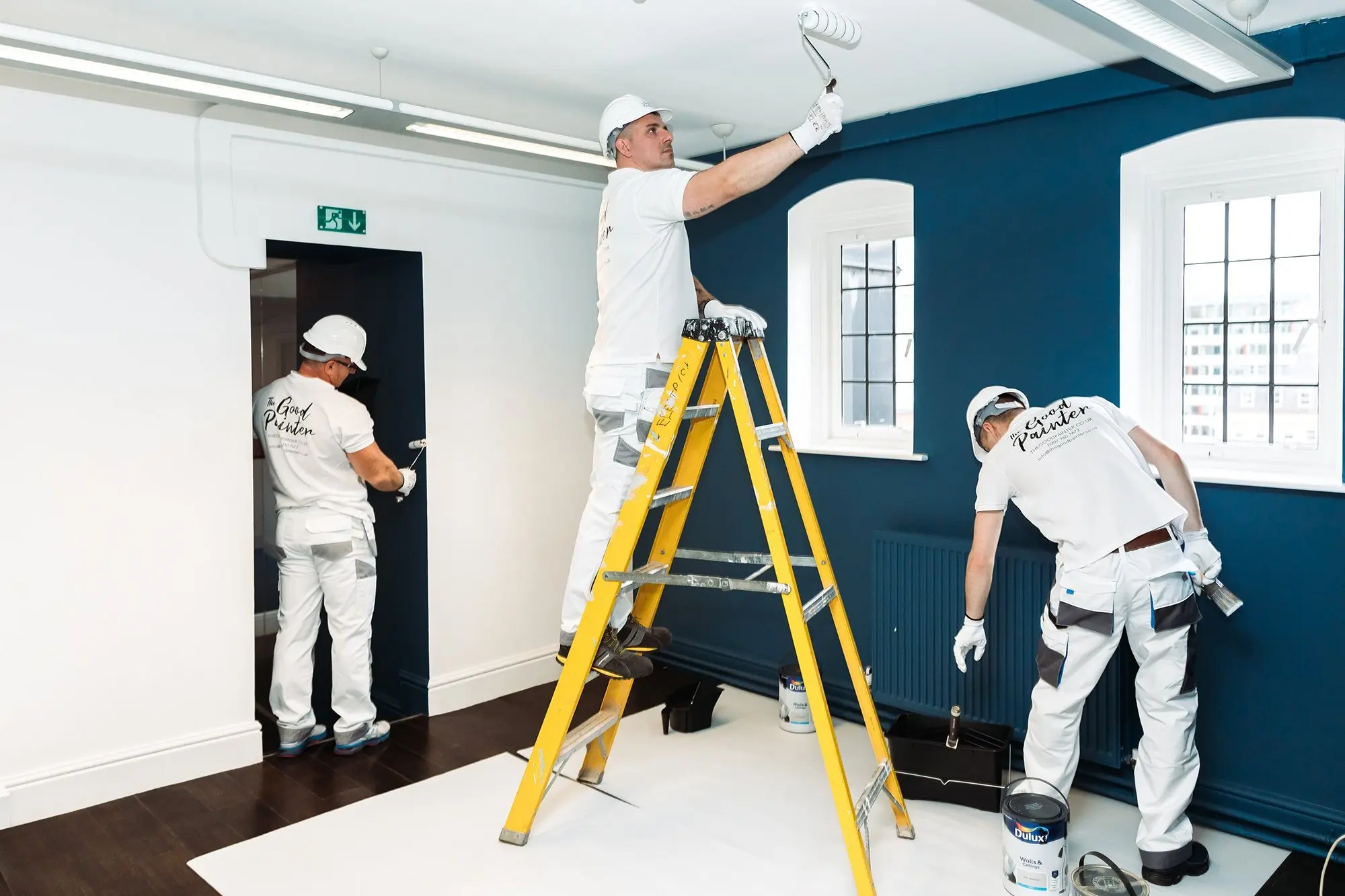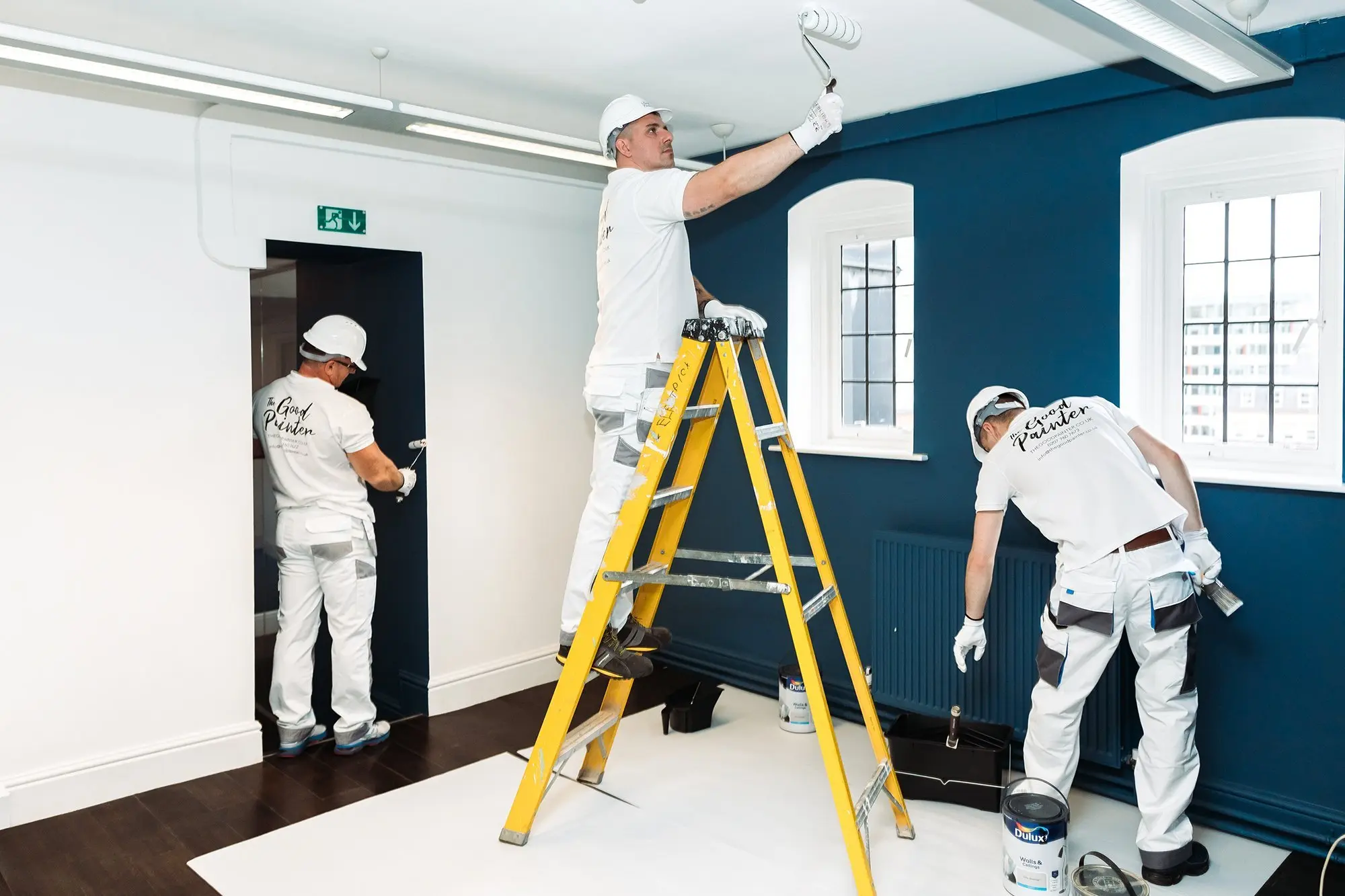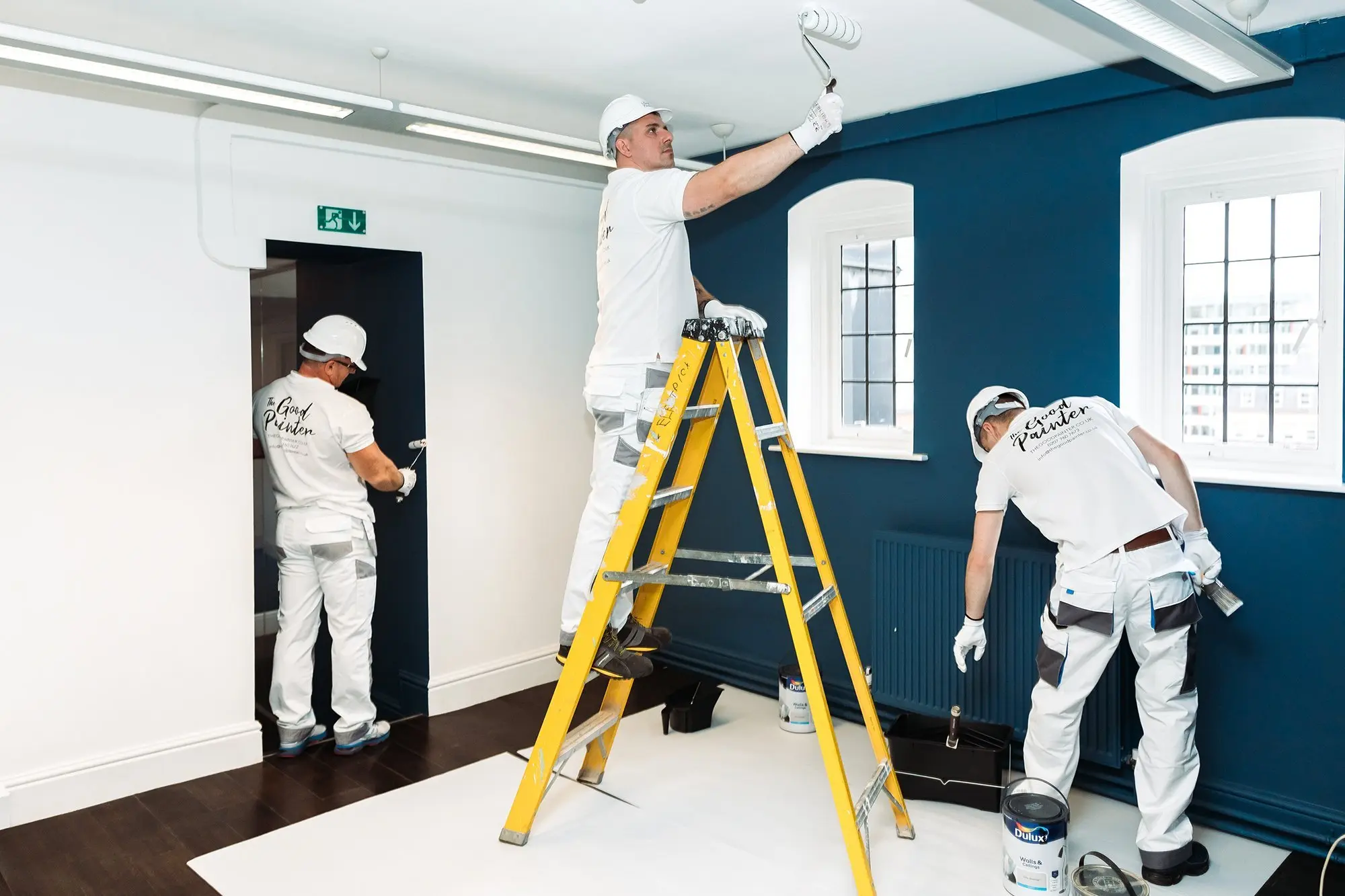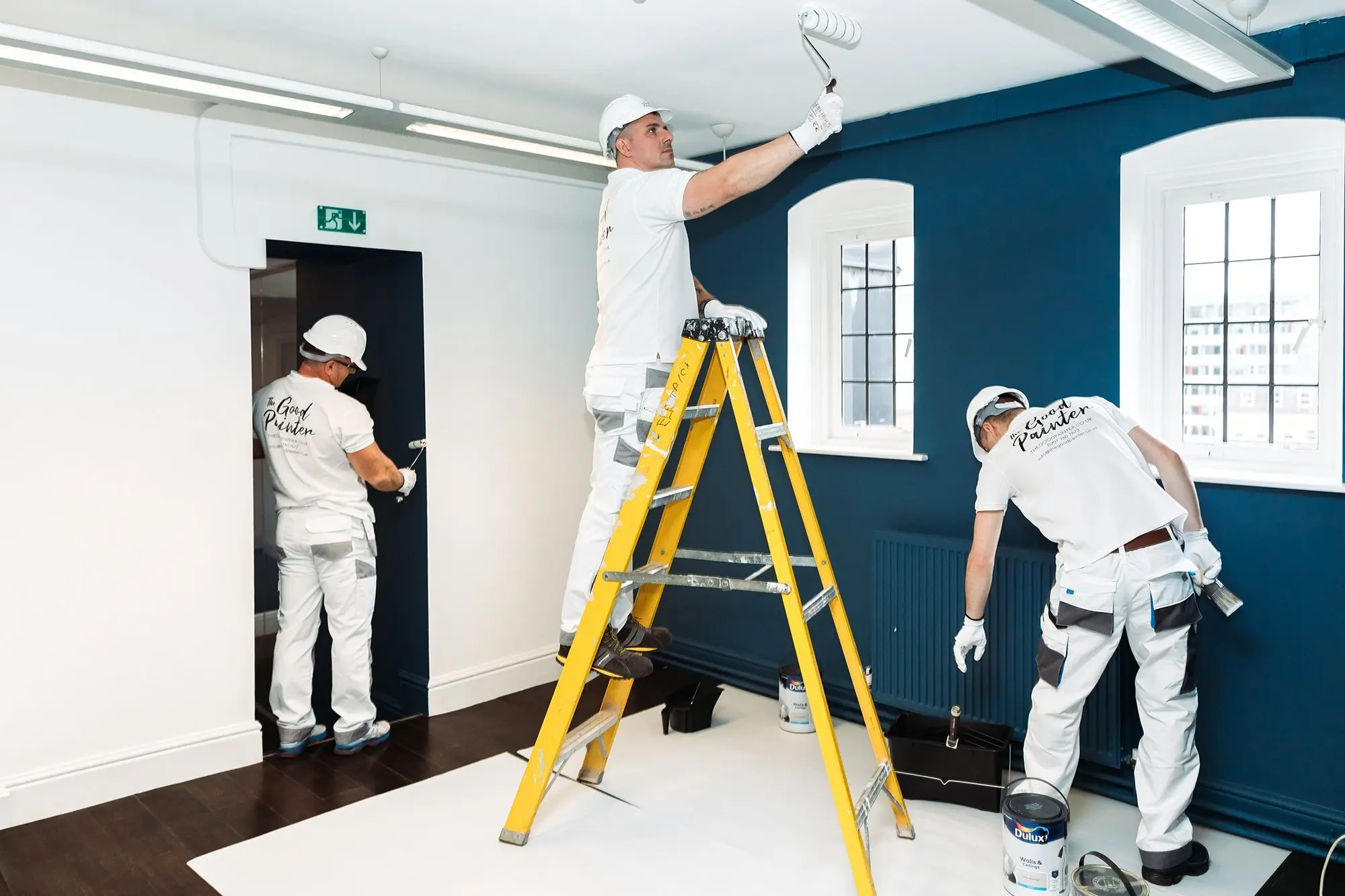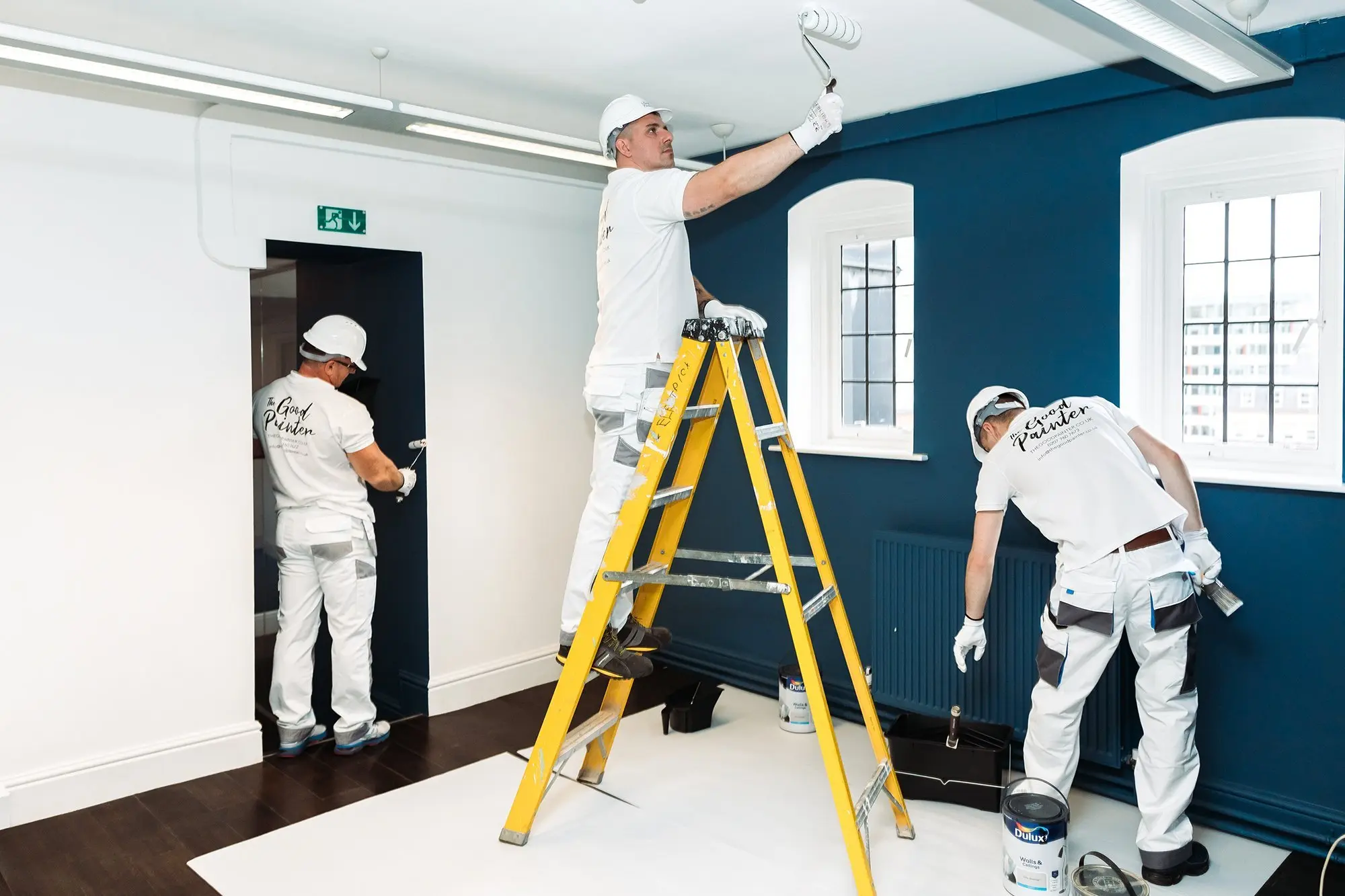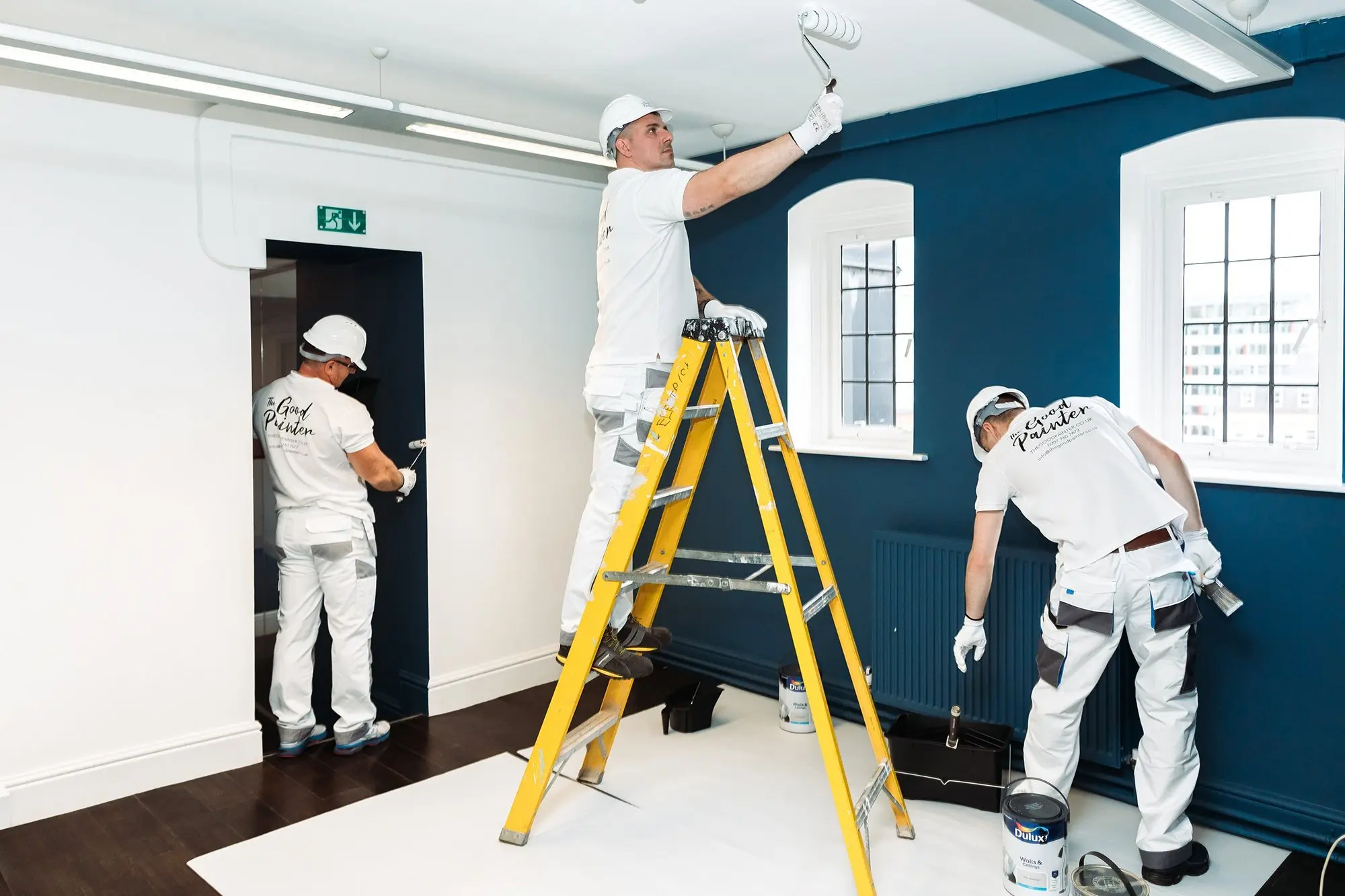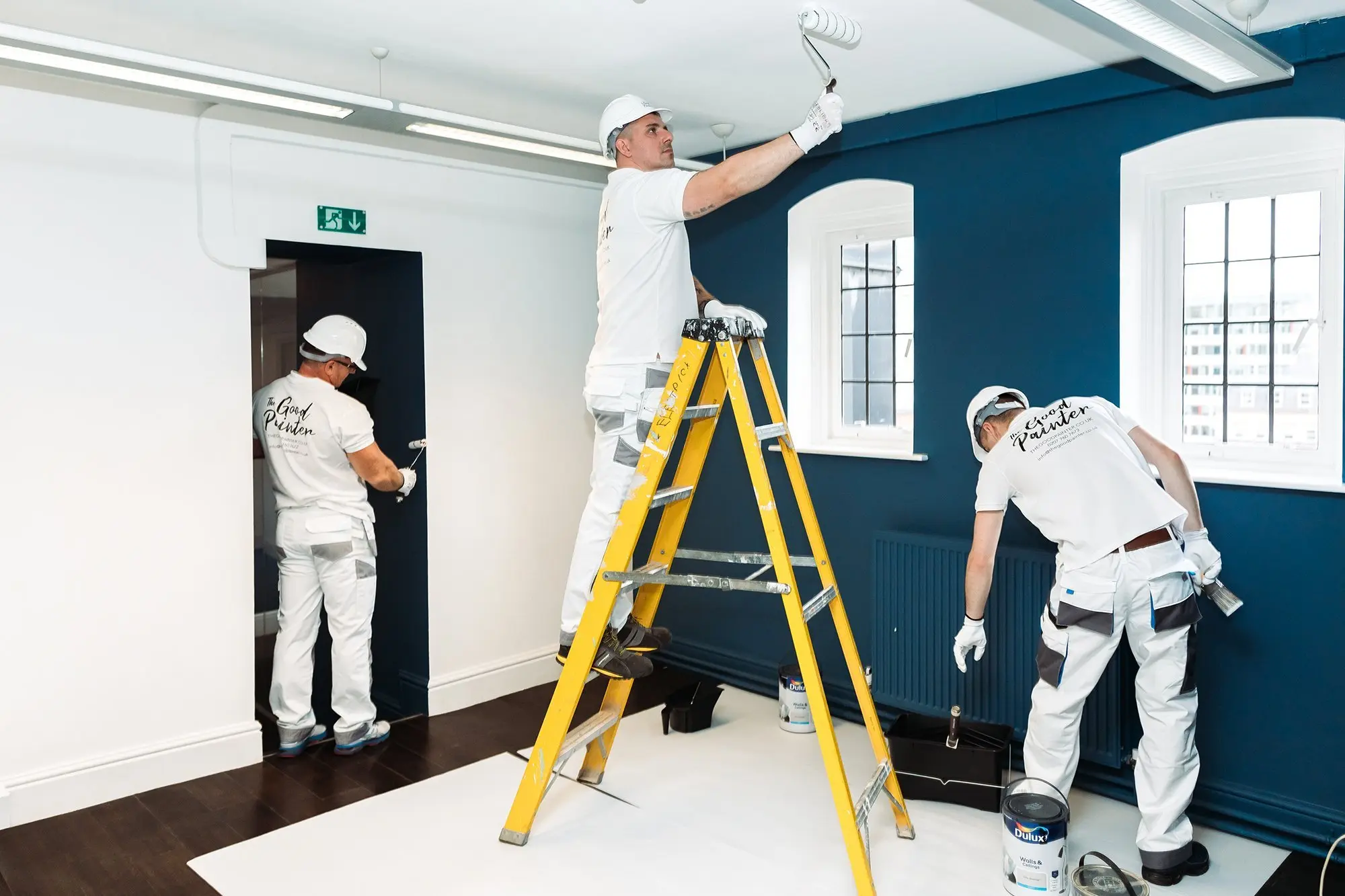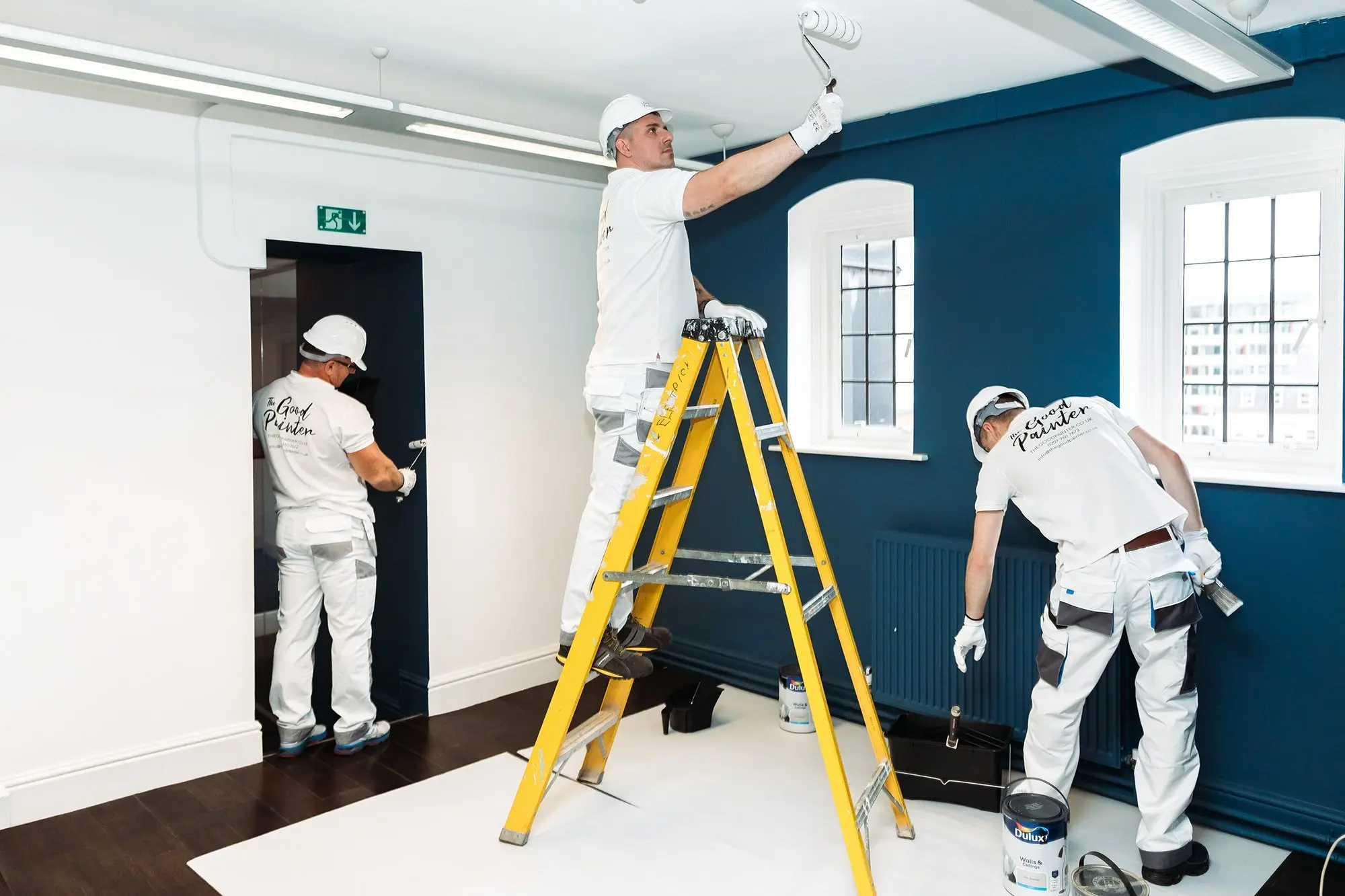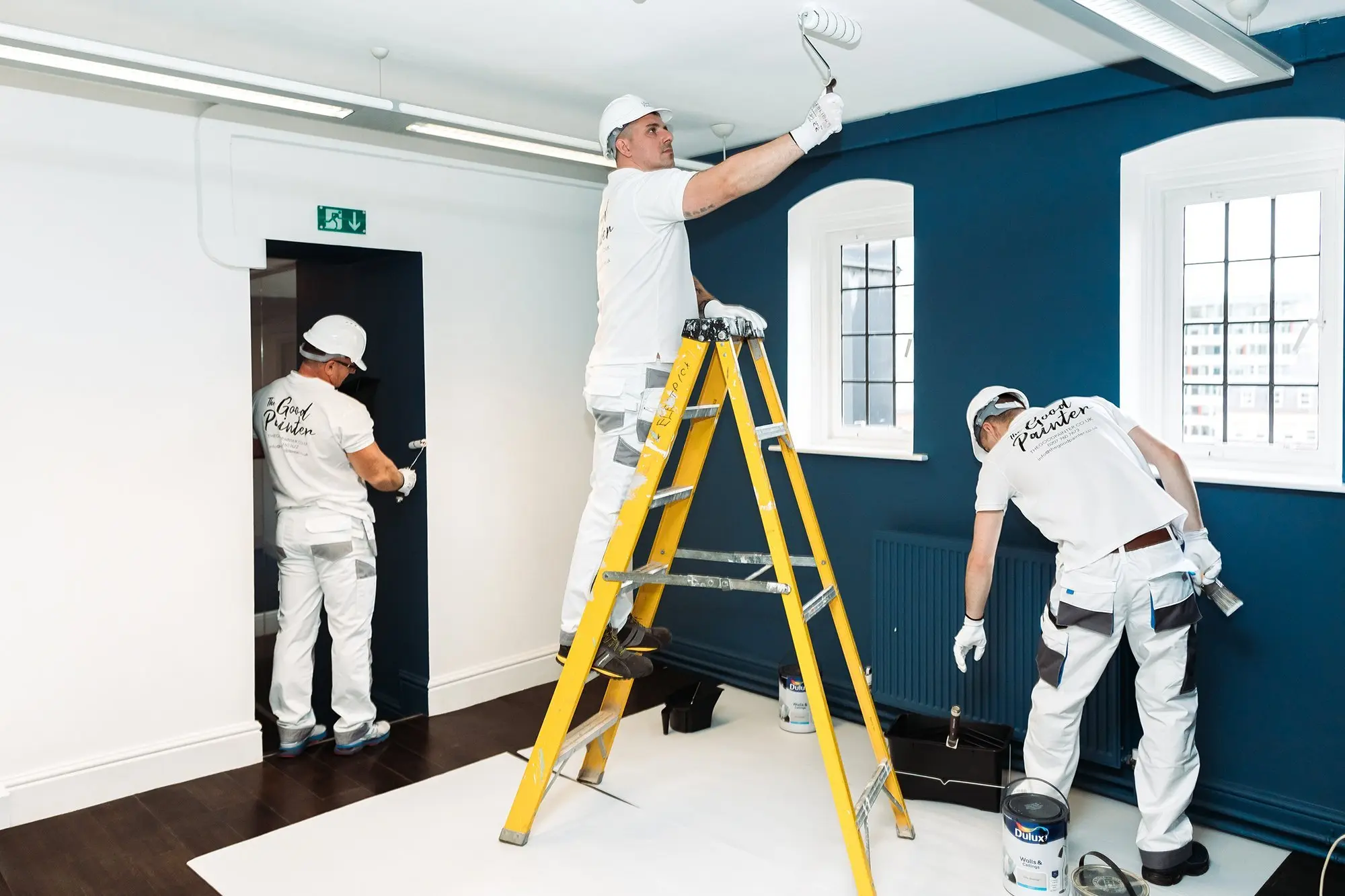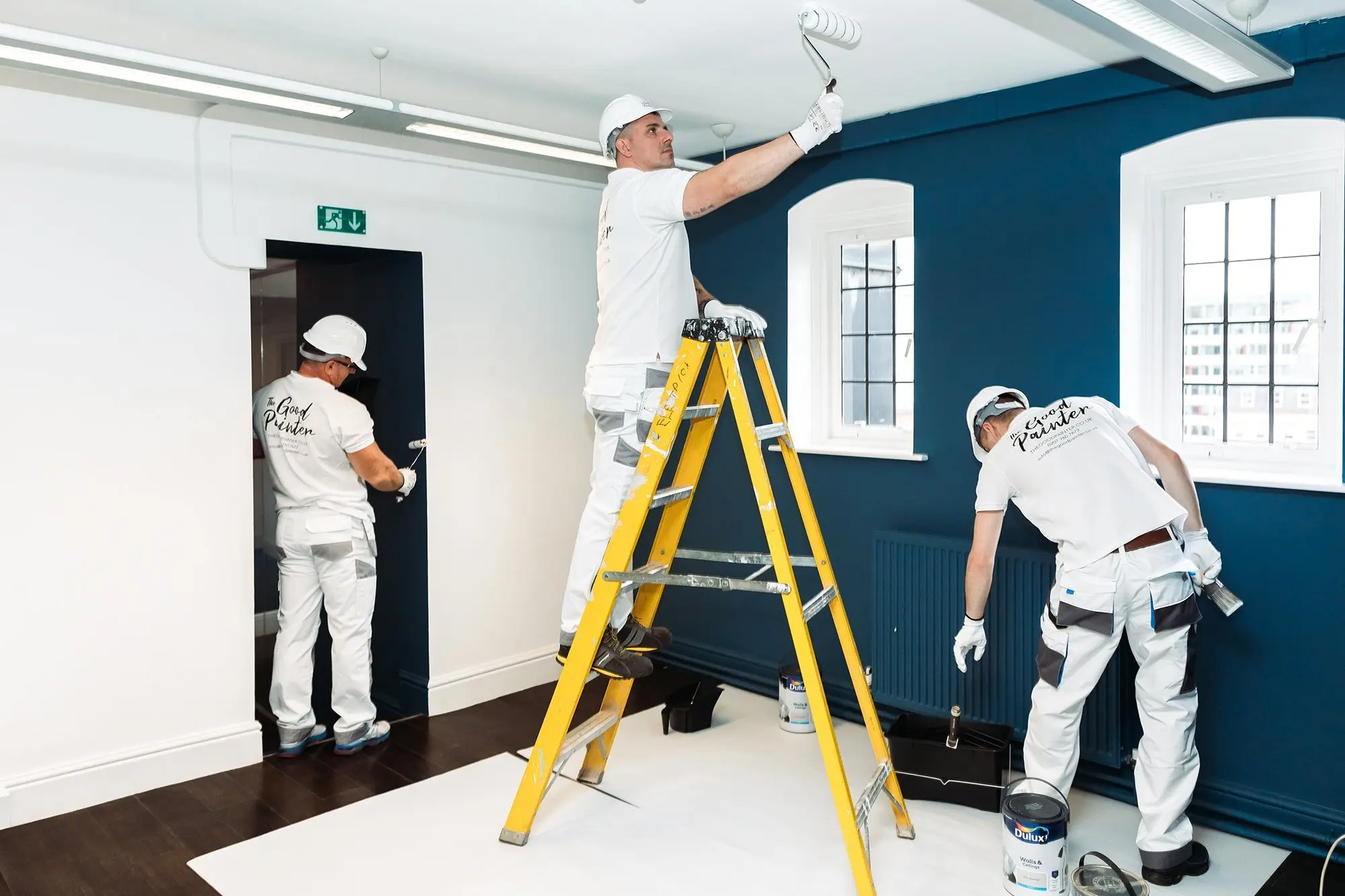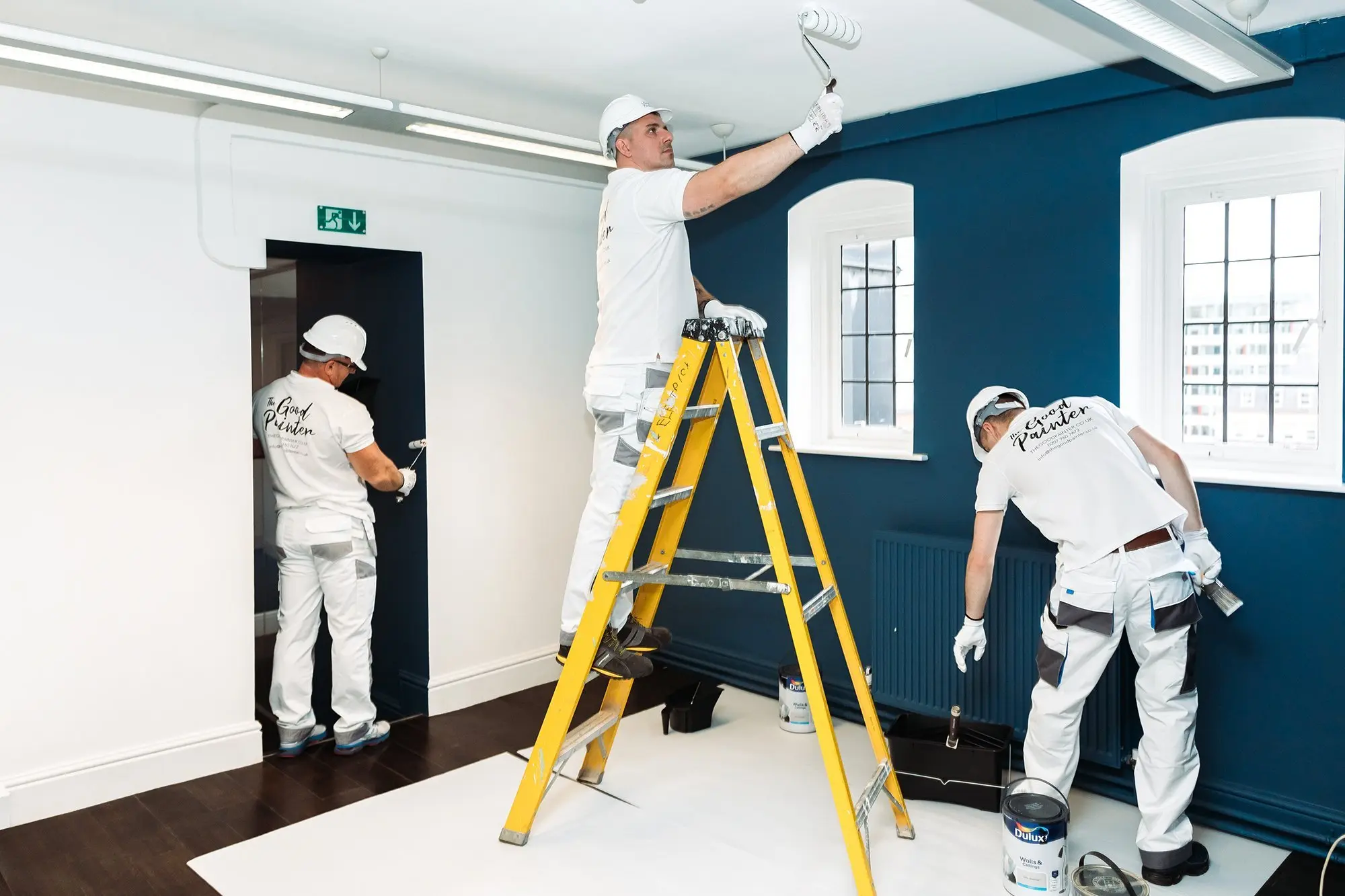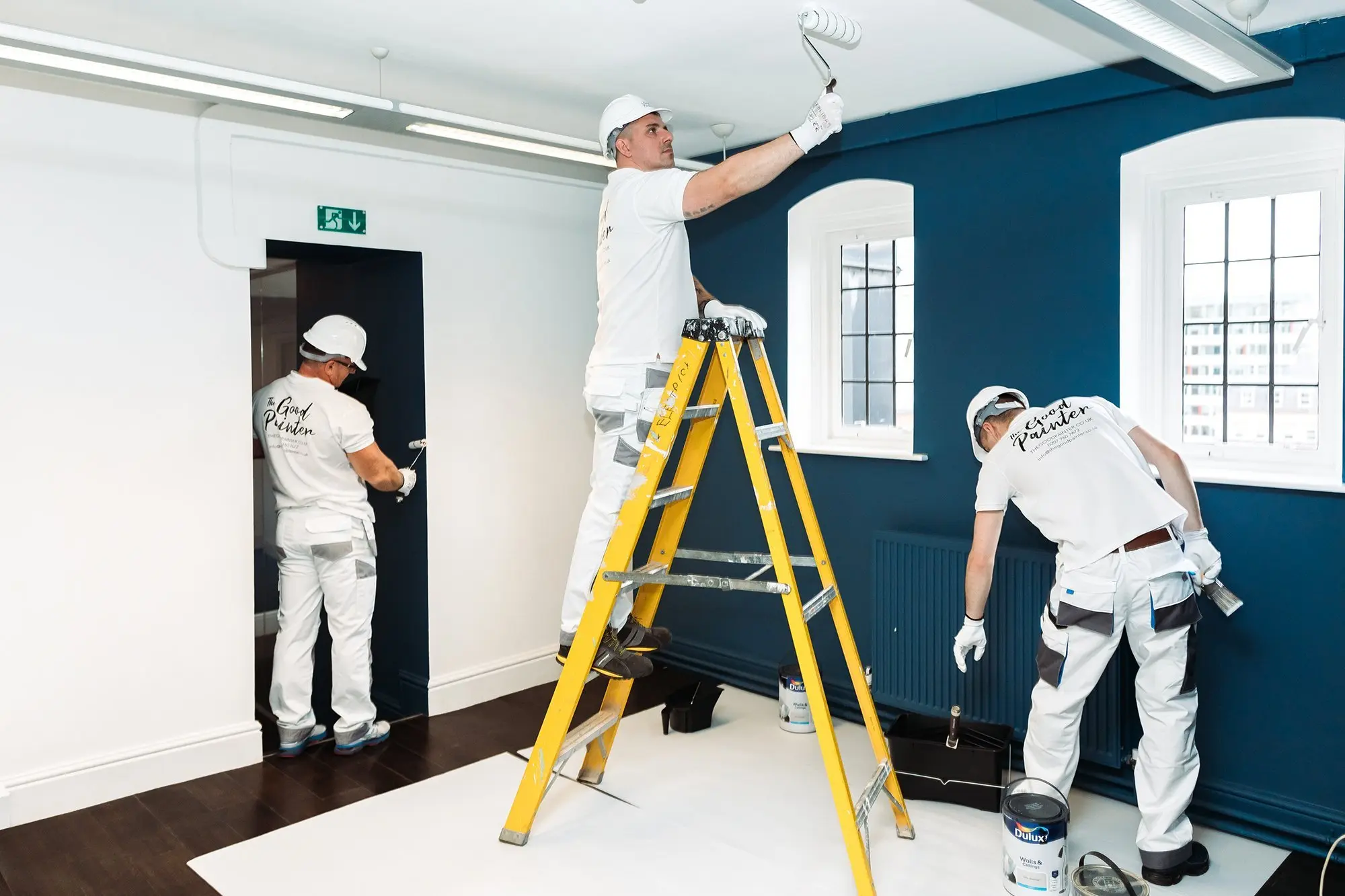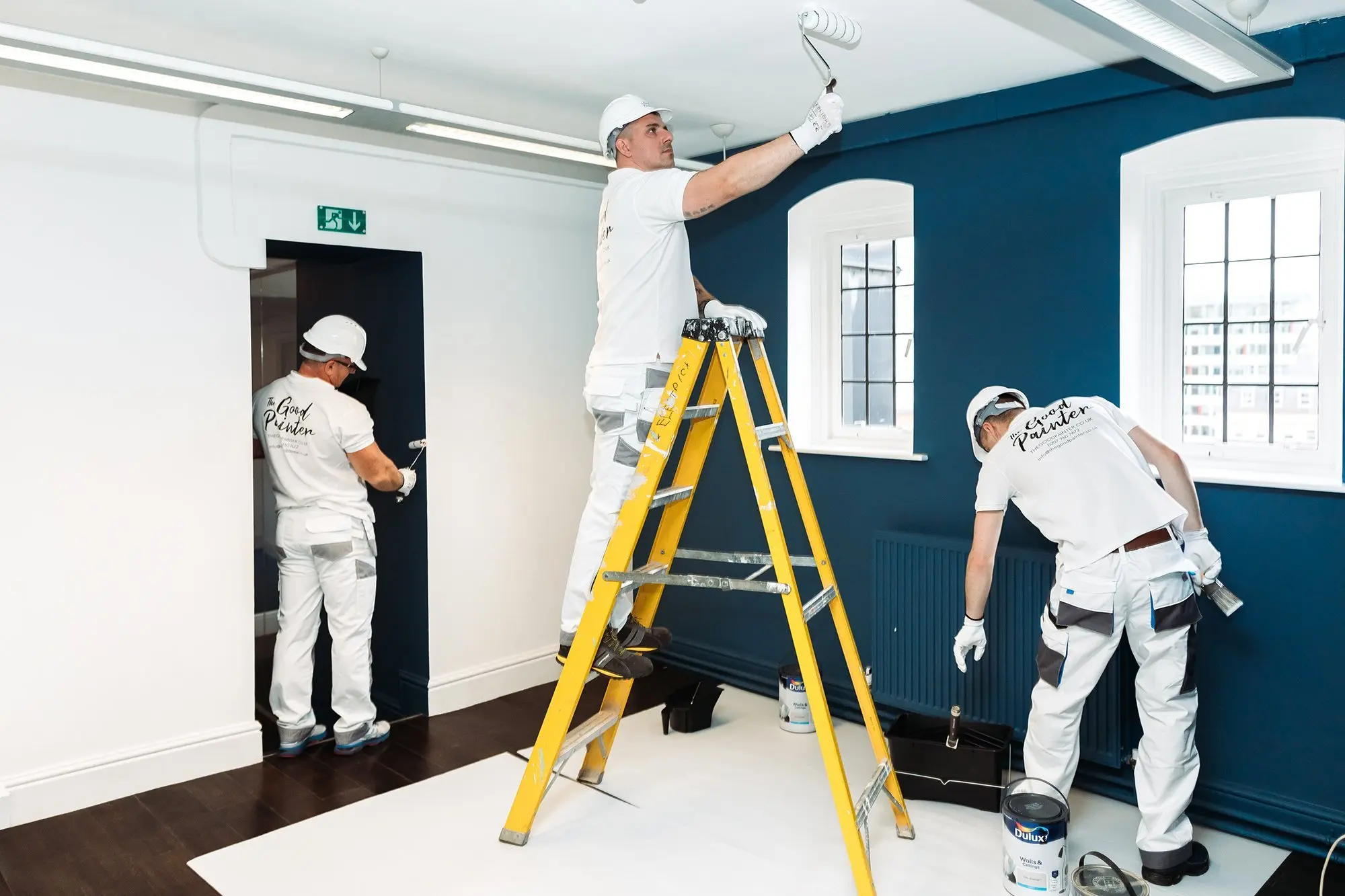Complete Painter & Decorator Insurance Guide: Essential Protection for Decorating Professionals
Introduction
The painting and decorating industry is a vital part of the UK construction sector, with thousands of professionals providing essential services to homeowners, businesses, and commercial properties. Whether you're a sole trader working on residential projects or running a larger decorating company handling commercial contracts, having the right insurance protection is crucial for your business success and peace of mind.
Painters and decorators face unique risks in their daily operations, from accidental damage to client property and potential injury claims to equipment theft and professional liability issues. Without adequate insurance coverage, a single incident could result in significant financial losses that might threaten the viability of your business.
This comprehensive guide explores the essential insurance products every painter and decorator should consider, helping you understand what coverage you need, why it's important, and how to choose the right policies for your specific business requirements.
Understanding the Risks Faced by Painters and Decorators
Property Damage Risks
Painting and decorating work involves working with various materials, chemicals, and equipment that can potentially cause damage to client property. Common risks include:
- Paint spillage on carpets, furniture, or flooring
- Damage to fixtures and fittings during preparation work
- Water damage from cleaning or preparation activities
- Accidental damage to walls, ceilings, or decorative features
- Damage caused by scaffolding or ladders
- Chemical staining or discoloration of surfaces
Personal Injury Risks
The nature of decorating work involves various activities that can lead to injury claims:
- Slips, trips, and falls on wet surfaces or debris
- Injuries from falling tools or equipment
- Chemical exposure or allergic reactions
- Dust inhalation issues
- Injuries caused by scaffolding or ladder accidents
- Burns from heat guns or other equipment
Professional Liability Risks
Even experienced decorators can face claims related to the quality or suitability of their work:
- Poor workmanship claims
- Color matching errors
- Inappropriate material selection
- Failure to meet project specifications
- Delays causing financial loss to clients
- Advice given regarding materials or techniques
Business Interruption Risks
Various factors can disrupt your decorating business operations:
- Theft of tools and equipment
- Vehicle breakdown or accident
- Illness or injury preventing work
- Damage to business premises
- Supply chain disruptions
- Economic factors affecting demand
Essential Insurance Products for Painters and Decorators
Public Liability Insurance
Public liability insurance is arguably the most important coverage for any painter and decorator. This insurance protects you against claims for injury or property damage caused to third parties during your work.
Key Coverage Areas:
- Accidental damage to client property
- Injury to members of the public
- Damage to neighboring properties
- Legal costs and compensation payments
- Emergency legal representation
Typical Coverage Limits: Most decorators should consider coverage of at least £1 million, though £2 million is increasingly becoming the standard requirement for many commercial contracts.
Why It's Essential: Many clients, particularly commercial customers and local authorities, require proof of public liability insurance before awarding contracts. Without this coverage, you may be excluded from lucrative opportunities.
Employers' Liability Insurance
If you employ staff, even on a part-time or casual basis, employers' liability insurance is legally required in the UK. This coverage protects you against claims from employees who suffer injury or illness as a result of their work.
Legal Requirements:
- Minimum coverage of £5 million
- Certificate must be displayed at workplace
- Failure to have coverage can result in fines up to £2,500 per day
Coverage Includes:
- Work-related injuries to employees
- Occupational illnesses
- Legal costs and compensation
- Rehabilitation costs
Professional Indemnity Insurance
Professional indemnity insurance protects against claims arising from professional advice, errors, or omissions in your work. For decorators, this can cover issues related to workmanship, material selection, or project management.
Common Claims:
- Allegations of poor workmanship
- Incorrect color matching
- Unsuitable material recommendations
- Project delays causing financial loss
- Failure to follow specifications
Coverage Benefits:
- Legal defense costs
- Compensation payments
- Rectification costs
- Loss of earnings protection
Tools and Equipment Insurance
Your tools and equipment are essential to your livelihood. Specialized tools insurance protects against theft, damage, or loss of your professional equipment.
Coverage Options:
- All-risks coverage for tools and equipment
- Theft from vehicles or premises
- Accidental damage
- Temporary replacement costs
- Personal effects coverage
Considerations:
- Ensure coverage limits reflect current replacement costs
- Consider whether coverage applies worldwide or just in the UK
- Check for any security requirements for vehicle storage
Commercial Vehicle Insurance
If you use vehicles for business purposes, standard personal motor insurance won't provide adequate protection. Commercial vehicle insurance is designed for business use and offers appropriate coverage levels.
Coverage Types:
- Third-party only
- Third-party, fire and theft
- Comprehensive coverage
- Goods in transit protection
- Business use classification
Important Considerations:
- Ensure your policy covers carrying tools and materials
- Consider coverage for hired-in vehicles
- Check geographical limits if working across borders
Business Interruption Insurance
Business interruption insurance helps protect your income if you're unable to work due to covered events such as illness, injury, or damage to essential equipment.
Coverage Benefits:
- Loss of income protection
- Fixed cost coverage
- Temporary premises costs
- Additional expenses incurred
Typical Triggers:
- Theft of essential tools
- Damage to business premises
- Illness or injury
- Key person unavailability
Specialized Coverage Considerations
Contract Works Insurance
For larger projects, contract works insurance provides coverage for the work in progress and materials on site. This can be particularly important for decorators working on substantial renovation or new-build projects.
Coverage Includes:
- Work in progress
- Materials on site
- Temporary buildings
- Plant and equipment
- Third-party property damage
Product Liability Insurance
If you supply materials or products as part of your service, product liability insurance protects against claims arising from defective products.
Relevant Scenarios:
- Paint or coating failures
- Wallpaper or material defects
- Adhesive or primer issues
- Chemical reactions or allergies
Cyber Liability Insurance
As businesses increasingly rely on digital systems, cyber liability insurance is becoming more relevant for decorators who store client data or process payments electronically.
Coverage Areas:
- Data breach response
- Cyber extortion
- Business interruption from cyber events
- Legal costs and regulatory fines
Factors Affecting Insurance Costs
Business Size and Turnover
Larger businesses with higher turnovers typically face higher premiums due to increased exposure to risk. However, they may also benefit from economies of scale and better risk management practices.
Type of Work
The nature of your decorating work significantly impacts insurance costs:
Lower Risk:
- Residential interior painting
- Small-scale decorating projects
- Standard materials and techniques
Higher Risk:
- Commercial and industrial projects
- High-level work requiring scaffolding
- Specialist coatings or materials
- Historic or listed building work
Claims History
Your claims history is a crucial factor in determining premiums. A clean claims record can lead to significant discounts, while previous claims may increase costs.
Location and Coverage Area
Where you operate can affect costs due to varying risk levels:
- Urban vs. rural locations
- Crime rates in operating areas
- Local weather patterns
- Economic conditions
Risk Management Measures
Insurers often offer discounts for businesses that demonstrate good risk management:
- Health and safety training
- Quality certifications
- Professional memberships
- Proper equipment maintenance
Choosing the Right Insurance Provider
Specialist vs. General Insurers
Specialist Trade Insurers:
- Better understanding of industry risks
- Tailored coverage options
- Industry-specific claims handling
- Competitive pricing for trade risks
General Insurers:
- Broader range of products
- Potential for package deals
- Established claims networks
- May lack industry expertise
Key Selection Criteria
Financial Strength:
- Check insurer ratings from agencies like AM Best or Standard & Poor's
- Look for established companies with strong market presence
- Consider the insurer's claims-paying ability
Claims Service:
- 24/7 claims reporting
- Local claims adjusters
- Fast claims processing
- Good customer service reputation
Coverage Flexibility:
- Ability to adjust coverage as business grows
- Optional extensions available
- Competitive pricing for additional coverage
Industry Experience:
- Understanding of decorating trade risks
- Experience with similar businesses
- Relevant case studies or testimonials
Risk Management Best Practices
Health and Safety
Implementing robust health and safety practices not only protects your workers and clients but can also help reduce insurance costs:
Key Areas:
- Proper use of personal protective equipment
- Safe working at height procedures
- Chemical handling and storage
- Tool and equipment maintenance
- Site safety assessments
Quality Control
Maintaining high standards of workmanship helps prevent professional indemnity claims:
Best Practices:
- Clear project specifications
- Regular quality inspections
- Proper surface preparation
- Appropriate material selection
- Detailed project documentation
Security Measures
Protecting your tools and equipment reduces the risk of theft claims:
Security Recommendations:
- Secure vehicle storage
- Tool marking and registration
- Alarm systems for premises
- CCTV installation
- Inventory management
Documentation
Proper documentation helps support insurance claims and defend against disputes:
Important Records:
- Project contracts and specifications
- Progress photographs
- Material receipts and warranties
- Health and safety records
- Training certificates
Common Policy Exclusions and Limitations
Standard Exclusions
Understanding what's not covered is crucial for managing your risk exposure:
Typical Exclusions:
- Intentional damage or criminal acts
- Work outside your normal trade
- Pollution (unless specifically covered)
- Professional work without proper qualifications
- Damage to your own work (betterment)
Coverage Limitations
Common Limitations:
- Geographical restrictions
- Time limits for claims notification
- Excess payments required
- Maximum claim amounts
- Specific exclusions for certain materials
Ways to Address Gaps
Options Include:
- Additional coverage extensions
- Separate specialist policies
- Higher coverage limits
- Lower excess payments
- Broader geographical coverage
Making a Claim
Immediate Steps
When an incident occurs, quick action is essential:
- Ensure Safety: Secure the area and prevent further damage
- Notify Authorities: Contact police if theft or criminal damage
- Document Everything: Take photographs and gather witness details
- Inform Your Insurer: Report the claim as soon as possible
- Preserve Evidence: Don't dispose of damaged materials
Claims Process
Typical Steps:
- Initial claim notification
- Claims adjuster appointment
- Investigation and assessment
- Settlement negotiation
- Payment or dispute resolution
Tips for Successful Claims
Best Practices:
- Provide complete and accurate information
- Cooperate fully with investigations
- Keep detailed records of all communications
- Don't admit liability without legal advice
- Seek professional help for complex claims
Cost Management Strategies
Shopping Around
Regular comparison of insurance options can lead to significant savings:
Comparison Factors:
- Premium costs
- Coverage levels
- Excess amounts
- Policy terms and conditions
- Insurer reputation and service
Package Policies
Combining multiple coverages with one insurer often provides cost savings:
Potential Packages:
- Public and employers' liability
- Professional indemnity and tools insurance
- Commercial vehicle and goods in transit
- Business premises and contents
Risk Reduction
Implementing risk reduction measures can lead to premium discounts:
Effective Measures:
- Health and safety training
- Quality management systems
- Professional certifications
- Security improvements
- Claims prevention programs
Payment Options
Different payment methods can affect overall costs:
Options Include:
- Annual payment discounts
- Monthly payment plans
- Direct debit arrangements
- Multi-year agreements
Legal and Regulatory Considerations
Compliance Requirements
Decorators must comply with various legal and regulatory requirements:
Key Areas:
- Health and Safety at Work Act
- Construction (Design and Management) Regulations
- COSHH (Control of Substances Hazardous to Health)
- Working at Height Regulations
- Environmental protection requirements
Professional Standards
Maintaining professional standards helps reduce liability exposure:
Important Standards:
- British Standards for painting and decorating
- Manufacturer specifications for materials
- Industry best practice guidelines
- Professional body requirements
- Client contract terms
Insurance Requirements
Many clients and contracts specify minimum insurance requirements:
Common Requirements:
- Minimum public liability limits
- Professional indemnity coverage
- Employers' liability compliance
- Additional insured endorsements
- Waiver of subrogation clauses
Future Trends and Considerations
Industry Evolution
The decorating industry continues to evolve, affecting insurance needs:
Emerging Trends:
- Eco-friendly materials and techniques
- Digital project management tools
- Specialized coating technologies
- Increased health and safety awareness
- Greater client quality expectations
Insurance Market Changes
The insurance market is also evolving:
Key Developments:
- More sophisticated risk assessment
- Technology-based policy management
- Parametric insurance products
- Increased focus on cyber risks
- Climate change considerations
Preparing for the Future
Strategies Include:
- Regular insurance reviews
- Staying informed about industry changes
- Investing in training and development
- Adopting new technologies
- Building strong client relationships
Conclusion
Comprehensive insurance protection is essential for any painting and decorating business, regardless of size or specialization. The right combination of coverages protects against the various risks inherent in the trade while providing the financial security needed to focus on growing your business.
The key to effective insurance protection lies in understanding your specific risks, choosing appropriate coverage levels, and working with experienced insurers who understand the decorating trade. Regular reviews of your insurance needs ensure that your protection evolves with your business.
While insurance represents a significant business expense, the cost of adequate coverage is minimal compared to the potential financial impact of uninsured losses. By investing in comprehensive protection and implementing good risk management practices, you can build a successful and sustainable decorating business with confidence.
Remember that insurance needs can change as your business grows and evolves. Regular consultation with insurance professionals ensures that your coverage remains appropriate and cost-effective, providing the protection you need to succeed in the competitive decorating market.
For expert advice on painter and decorator insurance tailored to your specific needs, contact Insure24 at 0330 127 2333 or visit our website to explore our comprehensive range of trade insurance products designed specifically for decorating professionals.


 0330 127 2333
0330 127 2333
